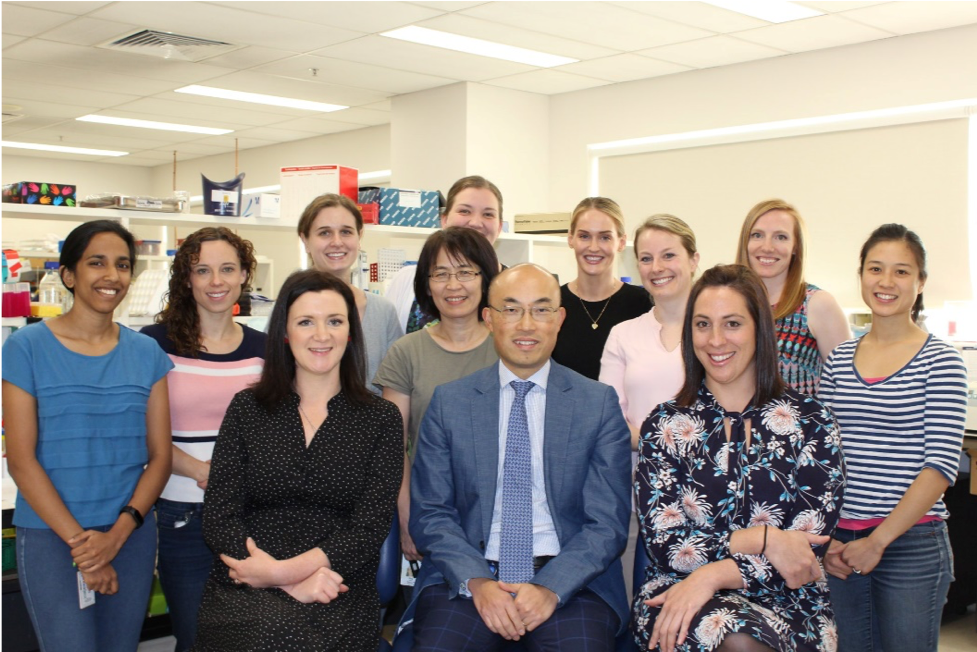Proton pump Inhibitors decrease sFLT-1 and sENG secretion, decrease hypertension, and rescue endothelial dysfunction
Kenji Onda, Stephen Tong, Sally Beard, Natalie Binder, Masanaga Muto, Sevvandi N. Senadheera, Laura Parry, Mark Dilworth...
Preeclampsia is a disease that becomes clinically apparent after two major insults to the mother. Firstly, for reasons we still don’t completely understand, the placenta does not embed properly in the uterus and releases anti-blood vessel factors into the mother's circulation. Secondly, these anti-blood vessel factors cause widespread damage to the mother’s blood vessels, injuring many vital organs.
In our screening pipeline, we assess whether drugs can reduce the amount of the anti-blood vessel factors that are released from the placenta as well as protect the mother’s blood vessels from injury. Thus, we are looking for one drug with two important beneficial actions.
Our screening pipeline relies on the generous donation of placentas and umbilical cords from women delivering their babies at the Mercy Hospital for Women in Victoria, Australia

Step one: To assess whether the drugs can reduce placental release of disease-causing factors
Our scientists take the placentas freshly delivered into the laboratory and over a 6-hour time frame, isolate the specific layer of cells that releases the anti-blood vessel factors. The cells are kept alive in a petri dish and treated with potential drugs to identify those that can reduce the release of the anti-blood vessel factors from the placental cells.
We also do the same experiment with small pieces of placental tissue (placental explants).
Step 2: To assess whether the drugs can protect blood vessel health
Blood vessel cells are isolated from umbilical cords. Once the cells are collected, they are treated with molecules known to mimic the damage in the blood vessels caused by preeclampsia. Drugs are then administered to the cells to identify those that can reverse or improve the blood vessel damage.
We have, in fact, a large number of laboratory assays to assess whether candidate drugs can protect blood vessels from the injury seen in preeclampsia. They include obtaining whole blood vessels from women at caesarean section and seeing whether the drugs can dilate the blood vessel (a healthy response).
Step 3: To assess candidate drugs in pre-clinical trials
Before a drug can progress in to the clinic, it is important to test its potential in an animal model of the disease. We have a mouse model of preeclampsia in the laboratory that mimics the disease. Drugs that have shown promise when tested on placental cells and blood vessels are then progressed to this mouse model of preeclampsia, to see whether the they can rescue features of preeclampsia in the animal (such as blood pressure and excessive protein secretion in the urine).
Using this pipeline, we have either tested, or validated a number of drugs that have potential to treat or prevent preeclampsia. They include metformin, sofalcone, pravastatin, and others.
Importantly, we continue to screen more drugs in a quest to find the most effective drug for this major complication of pregnancy.

Chief Investigators
Professor Stephen Tong
Dr Natalie Hannan
Dr Tu’uhevaha Kaitu’u-Lino
Dr Fiona Brownfoot
PhD students
Natasha De Alwis
Natasha Pritchard
Carole-Anne Whigham
Research assistants
Sally Beard
Ping Cannon
Vi Nguyen
Natalie Binder
Research midwives
Gabrielle Pell
Rachel Murdoch
Genevieve Christophers
Funders:
National Health and Medical Research Council
The Norman Beischer Medical Research Foundation
Veski Foundation
Royal Australian and New Zealand College of Obstetricians and Gynaecologists
University of Melbourne
AVANT